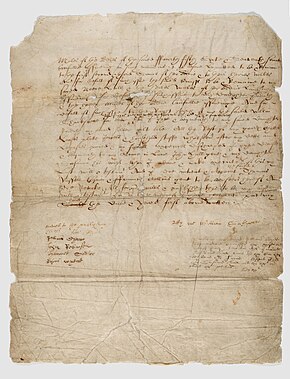
Palaeography (UK) or paleography (US; ultimately from ‹See Tfd›Greek: παλαιός, palaiós, 'old', and γράφειν, gráphein, 'to write') is the study and academic discipline of the analysis of historical writing systems, the historicity of manuscripts and texts, subsuming deciphering and dating of historical manuscripts, including the analysis of historic penmanship, handwriting script, signification and printed media. It is primarily concerned with the forms, processes and relationships of writing and printing systems as evident in a text, document or manuscript; and analysis of the substantive textual content of documents is a secondary function. Included in the discipline is the practice of deciphering, reading, and dating manuscripts,[2] and the cultural context of writing, including the methods with which writing and printing of texts, manuscripts, books, codices and tomes, tracts and monographs, etcetera, were produced, and the history of scriptoria.[3] This discipline is important for understanding, authenticating, and dating historic texts. However, in the absence of additional evidence, it cannot be used to pinpoint exact dates.
The discipline is one of the auxiliary sciences of history, and is considered to have been founded by Jean Mabillon[4] with his work De re diplomatica, published in 1681, which was the first textbook to address the subject. The term palaeography was coined by Bernard de Montfaucon[5] with the publication of his work on Greek palaeography, the Palaeographia Graeca, in 1708.[6]
- ^ Cardenio, Or, the Second Maiden's Tragedy, pp. 131–3: By William Shakespeare, Charles Hamilton, John Fletcher (Glenbridge Publishing Ltd., 1994) ISBN 0-944435-24-6
- ^ "palaeography". Oxford English Dictionary (Online ed.). Oxford University Press. (Subscription or participating institution membership required.)
- ^ "Latin Palaeography Network". Civiceducationproject.org. Archived from the original on 25 July 2011. Retrieved 5 May 2013.
- ^ Herbermann, Charles, ed. (1913). "Jean Mabillon" . Catholic Encyclopedia. New York: Robert Appleton Company.
- ^ Bernard de Montfaucon et al., Palaeographia Graeca, sive, De ortu et progressu literarum graecarum, Paris, Ludovicum Guerin (1708); André Vauchez, Richard Barrie Dobson, Adrian Walford, Michael Lapidge, Encyclopedia of the Middle Ages (Routledge, 2000), Volume 2, p. 1070
- ^ Urry, William G.. "paleography". Encyclopedia Britannica, 7 Aug. 2013. Accessed 15 November 2023.